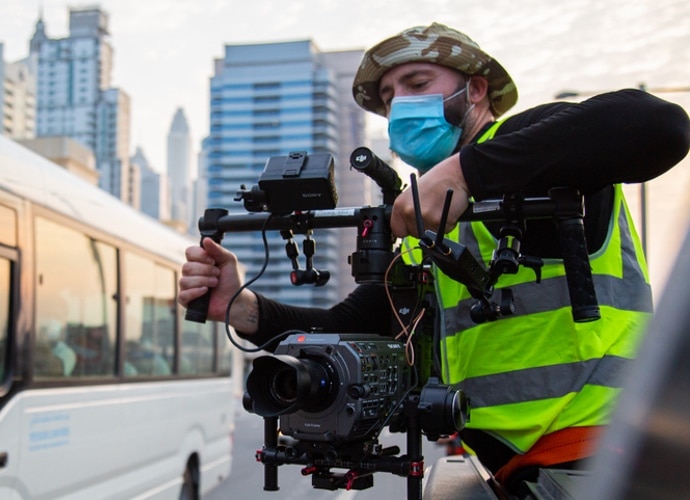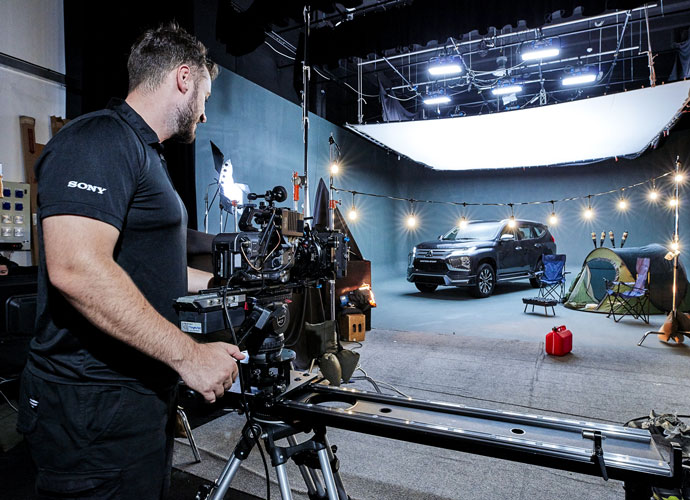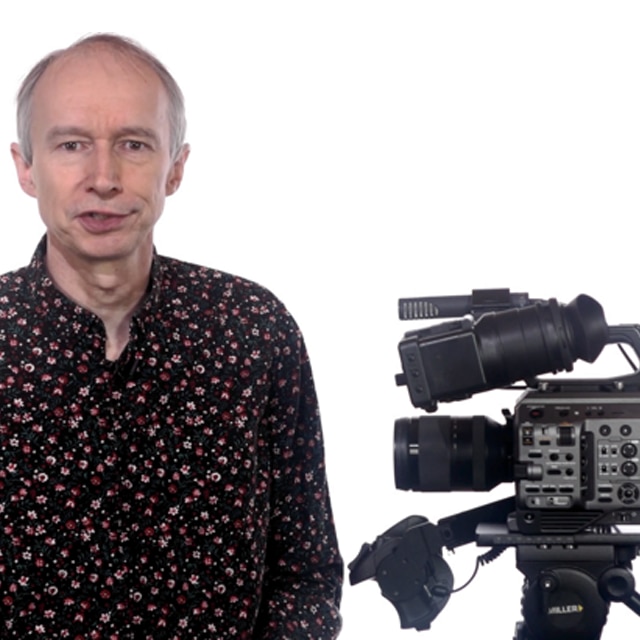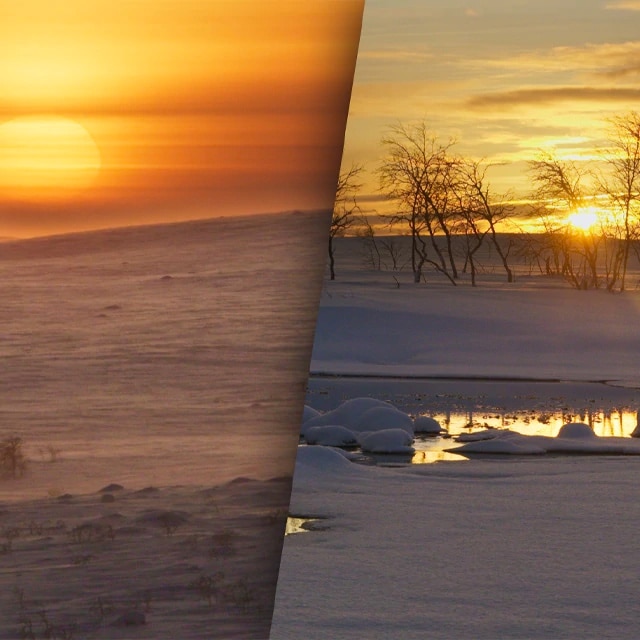The perfect Cine / Run and Gun camera?
On-set report from Mitsubishi Motors promo shoot in Dubai by Timothy Fare-Matthews
I think we can all agree that with the way things have gone in 2020, production budgets are going to be slashed further, even more value expected and the tools we choose need to perform better than ever.
To save you reading this entire article, I can sum up by saying that – without being biased to Sony – people are not giving this camera enough credit. Simply put, the FX9’s most valuable feature is the time it saves you.
Before I share with you how FX9 demonstrated this capability, let me introduce myself and the kind of work I do.
My name is Timothy Fare-Matthews, and I am a British DoP based in Dubai. I’m the co-founder of First and Ten Productions (also known as FTEN), one of Dubai’s leading production houses. We work with brands to produce their online video and photo content. In the decade of us operating, we have executed over 2,000 projects and our clients include VICE, Red Bull and the actor Will Smith.
Shooting cars has always been my passion. I started producing content from an early age, most of it in the UK, before I moved to the UAE.
Dream project with Mitsubishi Motors
We were lucky enough that straight after the lockdown, Mitsubishi Motors Middle East and Africa decided to throw a project our way: promotional content for the Attrage 2021.
It was our first big shoot in months, and as you can appreciate, we wanted to over-deliver. We agreed to deliver two very different style productions within a budget intended for one.
Project One would be shooting a social TVC style commercial with the Attrage driving through Dubai city streets in the scorching June heat. This involved a tripod setup, gimbal and handheld set-up with minimal crew and very little time to shoot. We would be heavily leaning on Sony G Master lenses and using as many Auto functions as we could find. It would be a real ‘run-and-gun’ shoot, lightly storyboarded with the camera crew grabbing the best shots as circumstances allowed.
Project Two, by contrast, was all about control with a cinematic walk around of four other Mitsubishi cars in an air-conditioned studio with all the crew support you can imagine. In this shoot, the FX9 was rigged up on sliders, using Sony Cine lenses and we did everything manually.
Here’s what we found.


Project One: On The Road
The first shoot began at a challenging 3 am. We had previously stripped down and prepped the FX9 to fit on one of our original Ronin gimbals. With minimal effort, it balanced well, and we paired this with a very light Sony E PZ 18-105mm f/4 G OSS Lens. It’s not full-frame, so we couldn’t utilise the 6K full-frame scan mode, but that didn’t matter as we wanted something with an excellent focal range that could perform well on Auto with the camera.
Our first shots of the day, as per the storyboard, opened with a heroic driving shot just as the sun was coming up. To execute the shots, I had support from one of our other DoPs: Ludovic Blot. Ludovic shoots a lot of content with me, and we tend to shoot very similarly, so having him on board was integral for the success of this sequence.
I wanted to push what could be done with a small team and see what the FX9 could do on Auto. I am very confident using the FX9’s Auto Focus to shoot people – the face detection is out of this world – but not so much with gimbals and cars. So, I was taking a risk.
As we headed to the quiet back roads of Dubai Marina, I decided to utilise the Content Browser Mobile (CBM) app on my phone to access the camera’s features. I had already rigged a Teradek Bolt 500 onto the camera and fixed a monitor to the side of the cab, but as it turned out we didn’t use it much as the CBM app was incredibly reliable.

As you can appreciate the exposure, white balance, focus and focal length all needed close attention during the shoot, so with Ludo concentrating on holding and framing the gimbal, I did the rest.
At one point, I remember getting ready for the perfect frame, but we had turned around on one of the bridges where the sun was directly facing us. The shot was way overexposed, too wide and the wrong colour. With a flick of the switch, I changed white balance, flicked on a ND filter and adjusted it to the perfect exposure, then zoomed in to get a close up of the windshield, and it was all done in a matter of 10 seconds. I felt like I was in the future. Ludo and I laughed at the convenience of what just happened.
With a flick of the switch, I changed white balance, flicked on a ND filter and adjusted it to the perfect exposure…I felt like I was in the future, Ludo and I laughed at the convenience of what just happened.
We nailed all our shots within the first hour, so we could pack up and move to our next location ahead of schedule. (Who’s ever heard that before on a shoot?)
As the day progressed, we had a small opening segment where we needed to go handheld with the talent starting and loading the car. Being super familiar with the FS7, it was no effort to take FX9 off the gimbal and use it as though it had just come out of the box – just the camera’s basic shoulder mount and hand rocker on the right-hand side of the body. We pivoted from this setup to a tripod and then finally back to the gimbal for some sunset shots.

All in all, we did what usually would take three days and fifteen crew members in one day with just five people – including the driver.
The lenses I used were:
Sony E PZ 18-105mm f/4 G OSS Lens
Sony FE 16-35mm f/2.8 GM Lens
Sony Sonnar T* FE 55mm f/1.8 ZA Lens
Sony FE 90mm F2.8 Macro G OSS Lens
Sony FE PZ 28-135mm f/4 G OSS Lens (standard with the kit)
So it was essentially the gimbal, plus Sony camera and Sony Lens. Nothing more, nothing less.

Project Two: Studio Shoot
After a quick trip back to the office, we started to build up the camera with some 15mm rods, matte box, follow focus and got the FX9 ready for a three-day intensive studio shoot the next morning. We were very excited to be back in air conditioning and to have the comfort of coffee and more crew at our disposal.
We chose Atlas Television studios in Motor City, and the client had explicitly requested a tasteful grey background for all the vehicles to be shot against.
From the get-go, this camera remained on sticks or a ronford baker slider for its entire production. Sony Professional MEA was also kind enough to loan us the original F55’s Cine Alta Prime lens set which consisted of six lenses with focal lengths of 20mm, 25mm, 35mm, 50mm, 85mm and 135mm – all around T2 I believe. They’re a super 35mm lens, but again that didn’t matter as any DoP who is familiar with shooting cars wants to shoot on the longest focal length possible.
Across the three days, we went from a variety of lighting setups which really pushed the low light performance of the FX9. But I’ll be brutally honest, the camera never missed a beat. The images were beautiful, and it slowly became a forgotten feature of the production. I don’t mean this badly. Where I am going with this is that it was never a problem. All of us focused our attention on the lighting, car detailing and most of all, enjoying the shoot.
It was one of the most seamless, efficient, pleasant projects I’ve ever worked on.
I’m not saying the camera did it all, but not having to worry about it allowed me to have only half the team man the camera when adjusting was required. Consequently, more time was spent in other areas that made the production run smoother and at a higher quality.


Final words
Whether you’re for Sony or not, these cameras are just tools to execute a job. (Nothing more.) Everything should be judged on how it performed and how it looks when it’s complete. I’ve used many camera brands, and some of them have some amazing features, but I’m a businessman first, and I’d rather have something that can save me time / keep the client happy.
To sum up, in both productions, the FX9 blended and adapted and performed exactly how we wanted it to. It went from 49 degrees C outside to 18 degrees C inside and shot for 10+hours for four days. It never missed a beat. Never let us down, and most of all, was easy to use.
For me, FX9 has the genes of Sony’s flagship VENICE camera but also the toughness of the FS7 – it’s slap bang in the middle of what it’s designed to do and I’m not sure why would buy anything else.
To answer the question we started with – yes – there is a camera that can be used in cinematography as well as run and gun setup.
It’s the FX9.





